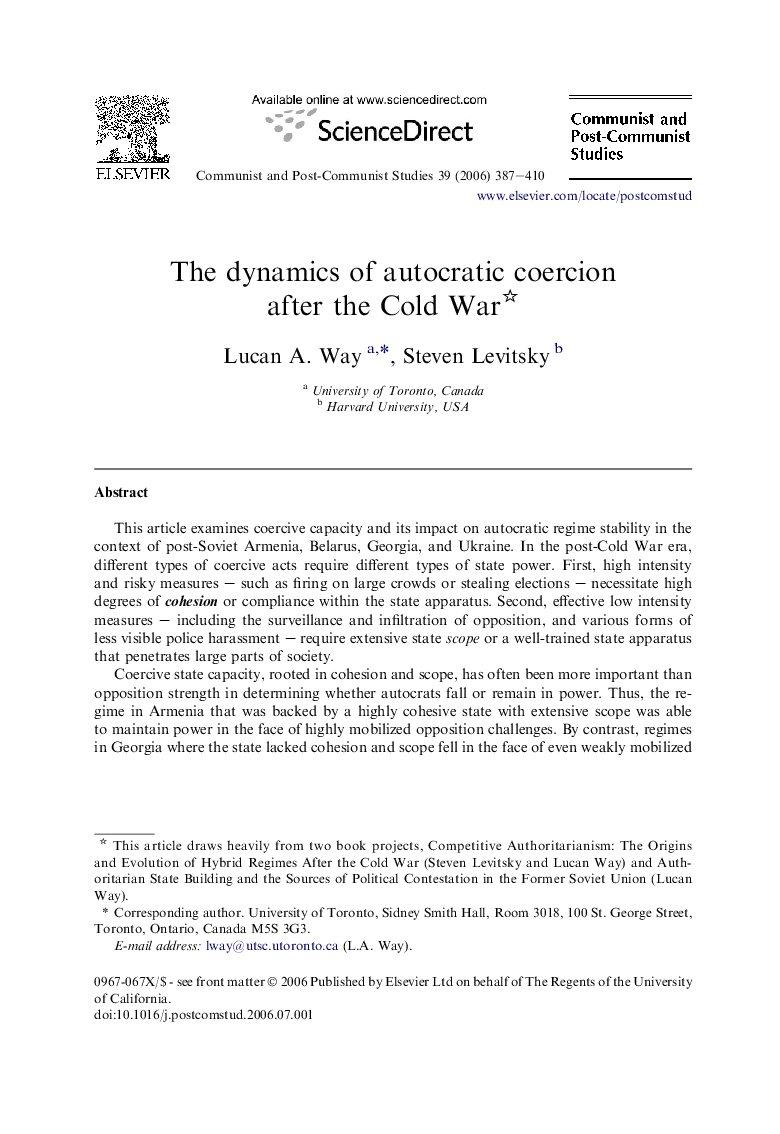| کد مقاله | کد نشریه | سال انتشار | مقاله انگلیسی | نسخه تمام متن |
|---|---|---|---|---|
| 1046782 | 945115 | 2006 | 24 صفحه PDF | دانلود رایگان |

This article examines coercive capacity and its impact on autocratic regime stability in the context of post-Soviet Armenia, Belarus, Georgia, and Ukraine. In the post-Cold War era, different types of coercive acts require different types of state power. First, high intensity and risky measures – such as firing on large crowds or stealing elections – necessitate high degrees of cohesion or compliance within the state apparatus. Second, effective low intensity measures – including the surveillance and infiltration of opposition, and various forms of less visible police harassment – require extensive state scope or a well-trained state apparatus that penetrates large parts of society.Coercive state capacity, rooted in cohesion and scope, has often been more important than opposition strength in determining whether autocrats fall or remain in power. Thus, the regime in Armenia that was backed by a highly cohesive state with extensive scope was able to maintain power in the face of highly mobilized opposition challenges. By contrast, regimes in Georgia where the state lacked cohesion and scope fell in the face of even weakly mobilized opposition. Relatively high scope but only moderate cohesion in Belarus and Ukraine has made autocratic regimes in these countries generally more effective at low intensity coercion to prevent the emergence of opposition than at high intensity coercion necessary to face down serious opposition challenges.
Journal: Communist and Post-Communist Studies - Volume 39, Issue 3, September 2006, Pages 387–410